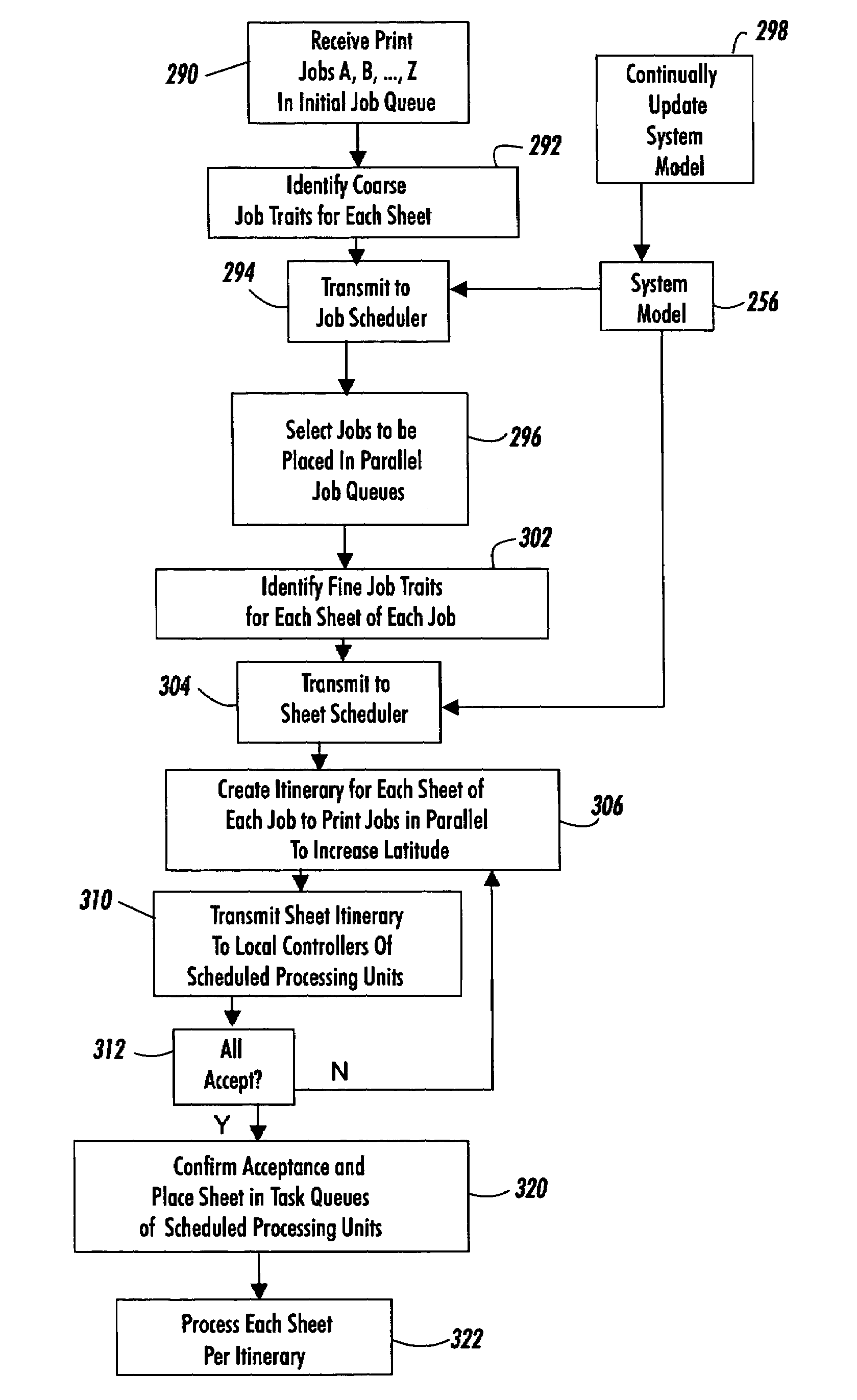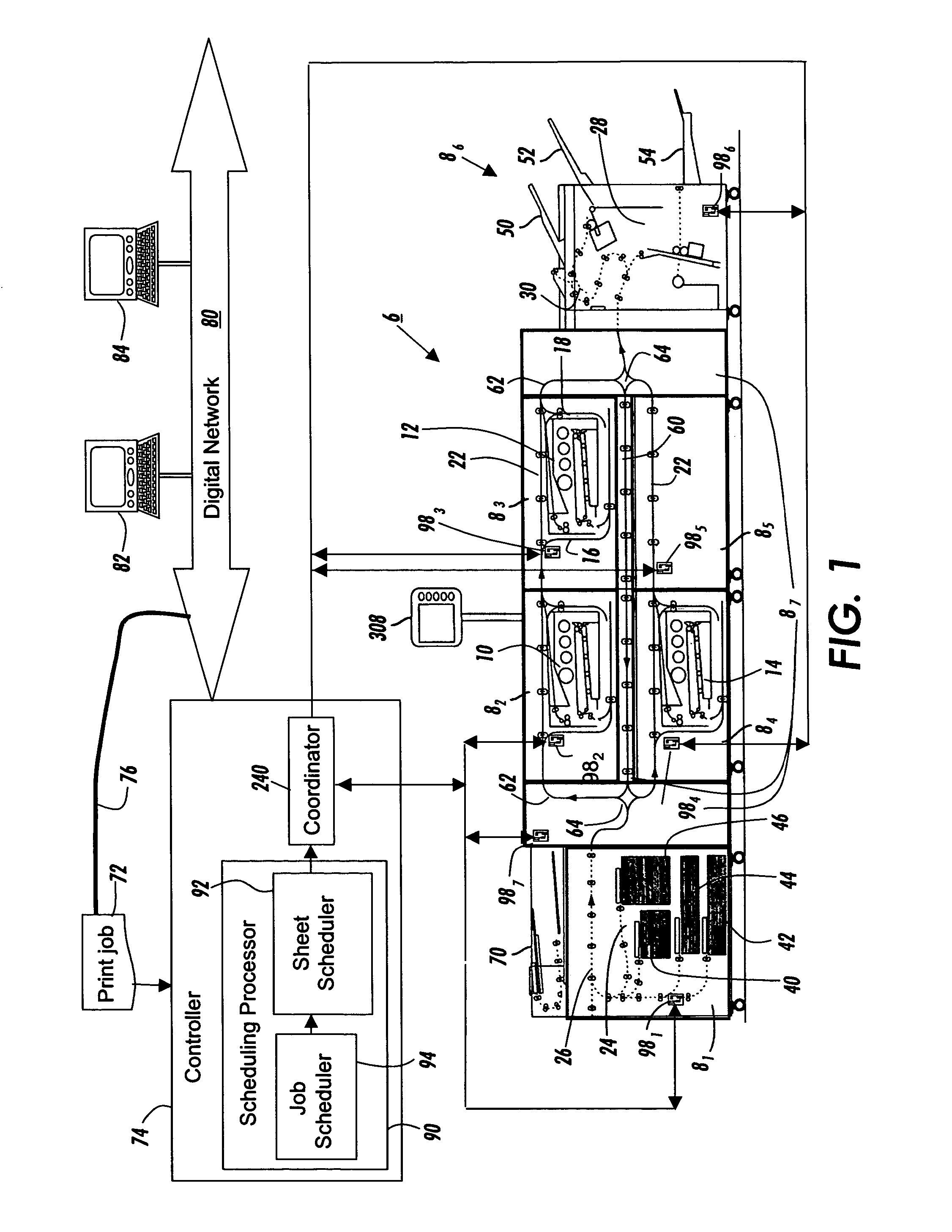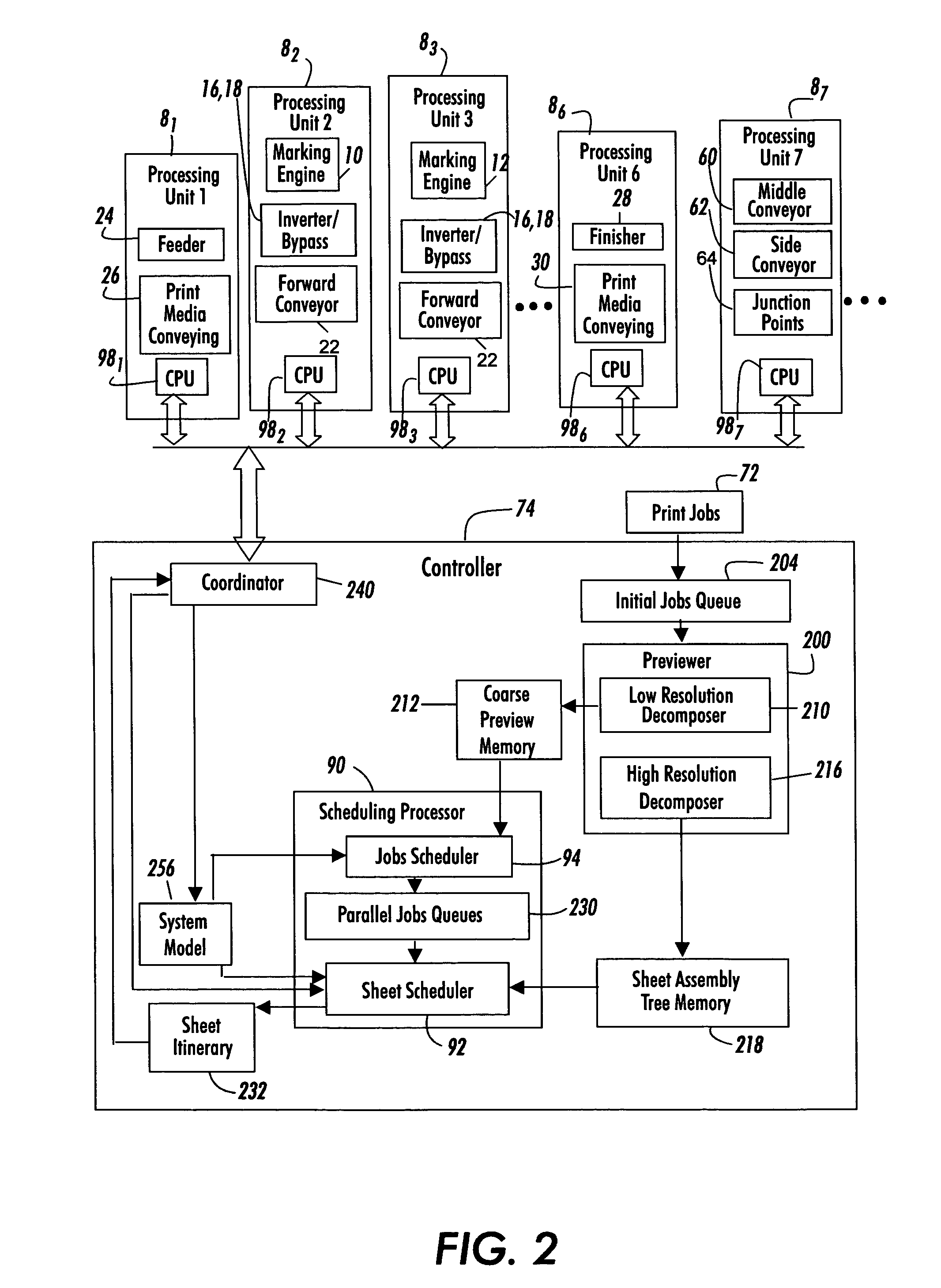Document processing system and methods for reducing stress therein
a document processing system and stress reduction technology, applied in the field of printing systems, can solve the problems of low production efficiency, low production efficiency, and low production efficiency of the print engine, and achieve the effect of increasing the operational latitude of the document processing system and short-term average deviations from the nominal operational latitude of the processing uni
- Summary
- Abstract
- Description
- Claims
- Application Information
AI Technical Summary
Benefits of technology
Problems solved by technology
Method used
Image
Examples
Embodiment Construction
[0030]With reference to FIG. 1, an example printing or document processing system 6 is a modular printing system including first, second, . . . , nth processing units or elements 81, 82, 83, 84, 85, 86, . . . , 8n. In one embodiment, the first, second, third, fourth, fifth and sixth processing units 81, 82, 83, 84, 85, 86 are interconnected by a seventh or print media processing unit 87, i.e., sheet conveyance processing unit. The processing units 81, 82, 83, 84, 85, 86, 87, . . . , 8n cooperate to produce completely assembled print jobs at high rate. While seven processing units are illustrated, the plurality of processing units may include two, three, four, five, six, seven, eight, or more processing units.
[0031]For example, in the printing system 6, the second, third and fourth processing units 82, 83, 84 include associated marking engines 10, 12, 14 and associated entry and exit inverter / bypasses 16, 18. In some embodiments, one or more operational components of the processing u...
PUM
 Login to View More
Login to View More Abstract
Description
Claims
Application Information
 Login to View More
Login to View More - R&D
- Intellectual Property
- Life Sciences
- Materials
- Tech Scout
- Unparalleled Data Quality
- Higher Quality Content
- 60% Fewer Hallucinations
Browse by: Latest US Patents, China's latest patents, Technical Efficacy Thesaurus, Application Domain, Technology Topic, Popular Technical Reports.
© 2025 PatSnap. All rights reserved.Legal|Privacy policy|Modern Slavery Act Transparency Statement|Sitemap|About US| Contact US: help@patsnap.com



